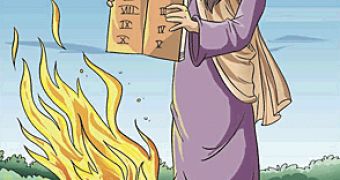Well, the truth is we don't know much about whether or not the son of God, Jesus Christ, ever existed in this world, but there is a good probability that Moses did. He is depicted throughout multiple religions as a prophet of God. The Holly Bible describes in the Old Testament how Moses, who was leading the exodus out of Egypt, stops at Mount Sinai to talk to God during which time He gave to Moses the Ten Commandments. Again, we have learned over the years - at least some of us did - to detach ourselves from the supernatural.
Thus, an Israeli psychology professor now proposes a brand-new shocking theory which suggests that while going up Mount Sinai, Moses would most likely have been high, and I'm pretty sure he's not talking about high altitude. According to Benny Shanon of Jerusalem's Hebrew University, Moses could have consumed hallucinogenic substances containing a series of psychoactive molecules extracted from plants that were used in the preparation of the powerful Amazonian hallucinogenic drink called ayahuasca.
This altered state of awareness would have resulted in visual and audio hallucinations such as the appearance of lightning and blaring of a trumpet as described in the Bible's Book of Exodus. Also, the hallucinogenic reaction, which follows the ingestion of such substances, would make the subject fall into a profound religious and spiritual feeling, accompanied by lightning and divine revelations that could have been interpreted as the appearance of God on Earth. Professor Shanon reveals that he has thought about the effects of ayahuasca drink as he has participated at more than 160 different occasions when the drink was brewed.
There is a good chance that, during ancient times, the plant which is used for the preparation of ayahuasca, harmal, could have been found in the regions around Mount Sinai and in multiple locations of the Middle East, and used by the Jewish population as a medicinal plant. Shanon also recognizes that there is no direct evidence to prove his theory, and after so much time proof could be provided even if he chose to defend it.

 14 DAY TRIAL //
14 DAY TRIAL //